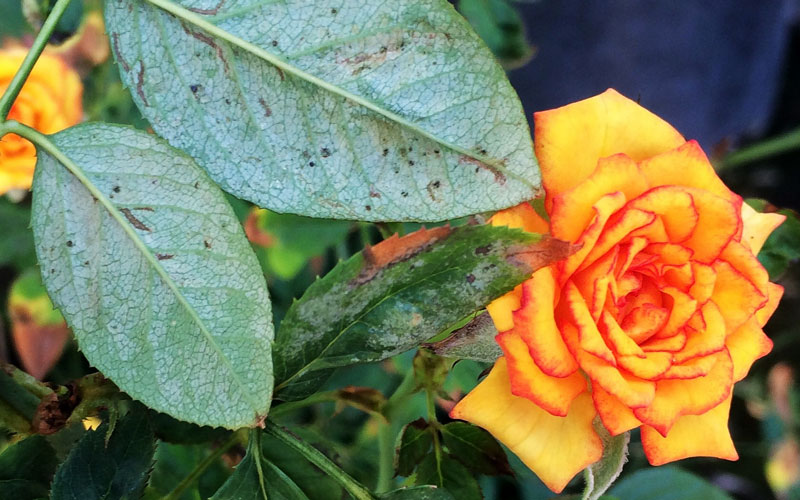Much to many gardeners’ regret, plant pests need very few suitable conditions for them to appear in a garden. And they are very tenacious, so getting rid of them is often not easy at all. The same applies to soil mites. They are fairly common insects that can damage your crop and cause harm directly to you. In this article, you will find brief information on how to identify them, why they are dangerous, and how to get rid of them quickly. For more tips, check out the blog of a professional gardener Bryan McKenzie.
Soil Mites Identification
“Soil mites” is the common name for nearly 80000 different species of insects. They belong to the arthropods type and are united by the fact that they live in the soil. These pests can be white or red and literally tiny in size. They are often difficult to see with the naked eye, especially since they move quickly. But they gather in groups. So if you find swarming white or red spots on your plants, it’s likely soil mites. If you can’t tell if the soil is infested, put some of it (only the upper layer) in a transparent plastic container. This will make it easier to see these insects.
Benefits and Disadvantages
As with any issue, the appearance of these insects in your garden has its pros and cons. Because they live in soil and feed on plant foods (including decayed parts) and other dead pests, they take part in the formation of humus and improve the ground’s structure. When they die, they also enrich the soil with useful trace elements.
On the other hand, those species that feed on healthy plants can significantly reduce the crop. They have such strong claws that they easily gnaw through flower bulbs. An infected plant stops blooming, bearing fruit, and dries up. They can also carry diseases and parasites that are dangerous to pets and humans (for example, tapeworm). And this is the main reason why you need to do your best to get rid of these insects.
How to Eliminate Soil Mites?
To understand how to deal with them properly, you need to know the reason for these pests’ appearance in your garden. They appear in excessively moist soil, covered with fallen leaves or in which there are rotting plant parts. Most often, they prefer to eat bulbous flowers, but they may eat other plants as well. If you are sure you have soil mites in your garden, follow these steps to eradicate them.
Get rid of food and water source
Remove fallen leaves from the ground and carefully examine each plant in your area. If you find rotting bulbs or roots, dig them up immediately and destroy them. Getting rid of the compost pile is also recommended as it serves as a bait and breeding ground for pests. It is a known fact that mites themselves go to another place if food runs out in the area in which they live.
Also, take care of the adjustment of your irrigation system. Make sure that the ground is not too wet. Clean or improve the drainage system if necessary. Water should not stay on a surface for a long time, as it can cause even repelled insects to return.
Treat soil and plants
Like any pest, soil mites are quite resistant to adverse conditions. They can enter diapause (a condition similar to suspended animation) when all internal processes slow down. And after some time, they return to their normal lifecycle.
Insecticides
It is important not only to restrict access to food and water but also to use quality insecticides. Products that contain Pyrethrin have long been proven effective in pest control. You can also use sprays with Malathion, Acaricide, and Dimethoate. Some of these agents kill adults, while others disrupt their reproduction process, gradually decreasing the insect population. True, you need to be very careful with them and spray non-edible plants or ground only. Remember to wear gloves, goggles, and respirator when handling. You can also fight soil mites using DIY methods, without the use of chemicals.
Garlic spray
Garlic is excellent at repelling many types of pests. To make a spray, use four fresh garlic cloves and one gallon of water. Leave the mixture for three to four days to infuse. The finished spray should be slightly diluted with clean water and applied to the soil and plant roots.
Cinnamon spray
For four cups of water, you should take a teaspoon of ground cinnamon. Fill the powder with water and let it brew a little. With this mixture, you can water and spray the roots of trees and plants.
Dish soap and starch
Take four tablespoons of starch, add a few drops of dish soap to them, and dissolve this mixture in five glasses of water. This solution can only be used for soil cultivation.
Wood ash and soap
This mixture will be an excellent soil disinfectant. One glass of wood ash should be filled with one gallon of water. After 24 hours, add 1.5 ounces of crushed solid soap to the infusion. The prepared mix should be abundantly watered in the soil under the trees and plants.
Preventing Soil Mites
Even after you’ve gotten rid of the pests, continue to keep your area clean and tidy to prevent them from reappearing. Remove fallen leaves timely and dispose of dead plants. Control soil moisture and avoid stagnant water.
Be careful when planting new plants: carefully inspect roots and bulbs to avoid introducing new parasites into your garden. Infested flowers should be separated from healthy plants. If it seems to you that they can still be saved, wash the roots in an insecticide and keep them in quarantine for a while.






